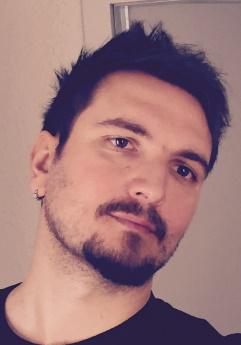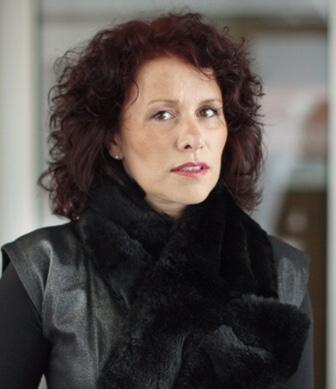Contact to experts:

Davor Orlič
Davor Orlič, Jozef Stefan Institute, OpeningupSlovenia lead, davor.orlic@ijs.si

Dr. Maja Bogataj Jančič
Dr. Maja Bogataj Jančič, director Intellectual Property Institute copyright and legal, maja@ipi.si
Other recommended websites: http://www.ouslovenia.net, http://unesco.ijs.si/, http://oercongress.org/, http://www.translexy.com/, https://www.x5gon.org/
Open Education in the country
“Opening Up Slovenia” is a bottom-up approach to policy development and implementation. Above all the initiative is a framework for engaging various stakeholders in order to discuss and implement openness in support of the digital transformation not only of education but also of businesses, industry and government. Opening Up Slovenia is not a piece of legislation, nor is it compulsory for anyone to get involved. However, everyone is invited and expected to participate and co-shape the initiative: teachers, learners, schools, governments and industries. One of the main stakeholders is the Ministry of Education, Science and Sports. The Ministry contributed towards designing the vision and action plan of the initiative, and plays an important dissemination and support role in its relations with different stakeholders.
Vision of open education in the country
Opening Up Slovenia is about the digital transformation of society. In this broad sense it encompasses various open practices (OER, open pedagogies, open technologies, collaboration, etc.). It is also concerned with digital competences (of citizens, teachers, learners) as a route to digital transformation. Open education is seen in the context of the 10 dimensions of open education in the OpenEdu Framework, and is not limited to open educational resources.
Policy design and involved stakeholders
The country’s biggest initiative in open education, Opening Up Slovenia was conceptualised in 2013 and officially launched in 2015. The government hopes the initiative will enable Slovenia to become the first green reference country on digital transformation and the first open reference country, serving as a case study for others to follow.
Opening Up Slovenia is a framework; a think tank with many stakeholders from different sectors, all treated as equal players, with the aim to discuss problems (e.g. related to digital education) and come up with solutions. It is a framework in the sense that it is a support mechanism for various projects. It brings them together, showcases them and helps establish partnerships and collaboration among the stakeholders. The ultimate goal is to design, implement, test, validate and share good practices.
There is not a specific document regulating Opening Up Slovenia, instead there are overarching goals which help framing the initiative. These goals were based on the computer literacy action project, which was designed in 1993 with the aim of introducing ICT in education in Slovenia. This literacy action project is a type of national action plan for education and is updated every seven years; the most recent update was in 2016. It was in this last revision that open education was first mentioned specifically in the document, as a support mechanism for digital transformation in different education sectors.
Policy dimensions and areas of action
When mapped against the OpenEdu Framework, Opening Up Slovenia deals with all the 10 dimensions (access, content, pedagogy, collaboration, research, strategy, technology, leadership and quality), which can be observed in the following objectives of the initiative:
- To update and modernise existing educational approaches in order to develop innovative and dynamic open learning environments and foster knowledge exchange. This goal will be achieved by:
- ensuring appropriate digital competences, skills and knowledge for everyone directly involved in the processes of education
- upgrading the open learning environments in educational and research institutions, which will enable the exchange of knowledge and experience between different fields
- developing an open platform (repository) of information technology, content, services, pedagogical concepts and approaches, models of added value and motivational mechanisms in open learning (‘open by default’ services)
- modernising approaches to leadership and management, which should be responsible, inclusive and autonomous
- Develop a legislative environment and mechanisms for quality assurance and control of open learning services. The objective will be achieved by:
- updating the existing legislation, and where necessary introducing new legislation that will be geared to enable the development and implementation of open learning principles
- creating clear quality standards of open education in cooperation with all the relevant stakeholders
- Create a collaborative environment for interdisciplinary and intersectoral research, development and deployment projects of open education where cooperation of public, private and non-governmental sectors will be paramount. This objective will be achieved by:
- fostering public-private and public-public partnerships that will ensure sustainable national, EU and international funding (e.g. Erasmus+, Horizon2020, European Structural and Investment Funds, World Bank, UNESCO, US educational institutions)
Open education and copyright
The European Union (EU) is currently undergoing a major copyright (CR) reform. New technologies and the development of global networks offer new opportunities for research and education. It is important that these activities should be supported and not hindered by expansions of CR. The technological ages created new possibilities for educational practices. We need copyright law that enables teachers to provide the best education they are capable of and that fits the needs of teachers in the 21st century. Intellectual Property Institute, a member of Opening Up Slovenia, cooperates closely with the Ministry of Education, Science and Sport in the processes of the copyright reform and advocates for the interests of various stakeholders included in the Opening Up on the EU and also national level.
Policy implementation and impact to date
Below there are three examples of projects (in one case actually a collection of projects) under the umbrella of the Opening Up Slovenia initiative:
- X5gon334: Cross Modal, Cross Cultural, Cross Lingual, Cross Domain, and Cross Site Global OER Network is an H2020 project combining content understanding, user-modelling and quality-assurance methods and tools to foster the creation of a homogenous network of OER sites and repositories, and it also provides users (teachers, learners) with a common learning experience based on “open” content. It is a prime example of innovation with machine-learning technologies being used for unlocking the potential of European OER. The project has been partially delivered for Slovenian OER sites, but with an extension into an EC grant it is fully deploying open technologies for recommendation, learning analytics and learning personalisation services that will work across various OER sites independent of languages, modalities, scientific domains and cultural contexts. X5gon will produce a technology stack in a platform format that will be extended to European Member States, thus promoting the use and uptake of OER and open education. It will invite Europe to act more practically and make an argument for why acting in a systemic way is vital. The rationale will address the six new priorities for Education 2020 and invite EU policymakers to engage in a more in-depth discussion beyond Erasmus+, OER, etc., with coordinated action in accordance with MS needs.
- MyMachine Slovenia (MIZS) is a project developing, piloting and scaling up new approaches for education and skills, featuring the ethos of open. It is probably one of the flagship projects within Opening Up Slovenia as it combines almost all 10 elements of the Open Education Framework. It brings together inter-generational learners (primary, secondary, HEI) into designing and building a child’s “dream machine”. It was implemented in order to address a lack of sufficient collaboration among research, entrepreneurial and policy stakeholders in teaching and learning practices, and a lack of inter-generational learning. It supports young people with a specific methodology, tools, open educational resources and an open environment encouraging experimentation and the development of joint “makers” projects based on interdisciplinary approaches. Because of its effectiveness and open educational practices, MIZS was exploiting its design and approach, to be used as an effective blueprint and pipeline it into the Slovenian educational system. MIZS issued a call for proposals for a nationwide large-scale project using the results of the initial project with the idea to guide young people into their entrepreneurial journey. MyMachine Slovenia is a project within the Opening Up Slovenia ecosystem, funded by the Jožef Stefan Institute (Centre for Knowledge Transfer in Information Technologies), which also hosts the UNESCO Chair on Open Technologies for OER and Open Learning. It has been running since 2015 and is in its third cycle. It has produced 18 “dream machine” prototypes, two exhibitions, 27 education institutions (primary, secondary, HEI) and several companies (depending on the nature of the prototype). It has also inspired two candidates to become early-stage researchers.
- Six new projects (€12.58 million, co-financed by European Social Fund (2017-2022). These projects aim to develop and implement open and innovative learning environments and flexible forms of learning so as to develop students’ general competences (reading and cultural literacy, communication ability, multilingualism, mathematics and science: promotion of critical thinking and problem solving, computational thinking, pedagogy to implement personalised and collaborative learning and formative assessment.
The necessary conditions to achieve open and innovative learning environments are:
- four types of mandatory partner for each of the six projects: Schools – all levels of pre-university education to be involved (primary, lower- and upper-secondary; vocational training/education; and kindergarten). In these six projects, at least 285 schools have participated – out of which the majority is primary/lower secondary, and the remaining are upper secondary schools and kindergarten schools; Public institutions/services (curriculum, teacher-training, school leadership, national examination); Educational faculties (for teachers); Public research institutions (surveys, development projects, cross-curricular activities)
- Bottom-up and top-down approach – two types of school are involved (development and implementation schools)
- Development of supportive environment for schools, teachers, headteachers, students
- Sustainability of partnerships – national, institutional, individual level
- “Whole school” approach (innovative schools: development team including headteacher; get more teachers involved year by year)
- Systematic potential changes and motivational approaches.
